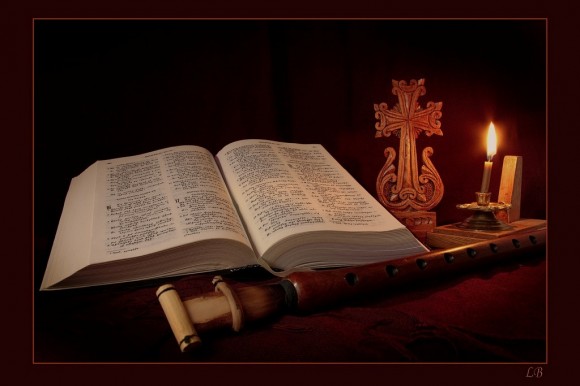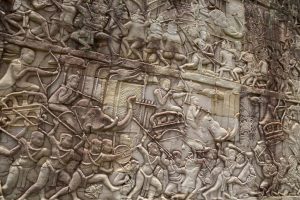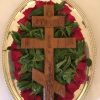The trouble with reading Scripture is that almost everybody thinks they can do it.
This idea is rooted in the assumptions of Protestant thought: only if the meaning of Scripture is fairly obvious and more or less objective can it serve as a source of unmediated authority for the believer. If any particular skill or mastery is required, then the skillful masters will be the mediators of meaning for all the rest. The concept of any intervening authority is anathema to the Protestant project. It is equally unsuitable to the assumptions of the modern world. For the modern world, born in the Protestant milieu, is inherently democratic. The individual, unaided, unbridled, and unsubmitted, is the ultimate authority.
These assumptions are greatly removed from the thoughts of the fathers of the Church. No matter how “literal” a father’s treatment of Scripture might be, he never assumed the meaning of Scripture to be obviousand universally accessible. The clear consensus of the fathers is found in the words of the Ethiopian Eunuch: “How can I [understand the Scripture] unless someone guides me?” (Acts 8:31).
Andrew Louth, writing in his book, Discerning the Mystery, says:
If we look back to the Fathers, and the tradition, for inspiration as to the nature of theology, there is one thing we meet which must be paused over and discussed in some detail: and that is their use of allegory in interpreting the Scriptures. We can see already that for them it was not a superfluous, stylistic habit, something we can fairly easily lop off from the trunk of Patristic theology. Rather it is bound up with their whole understanding of tradition as the tacit dimension of the Christian life: allegory is a way of entering the ‘margin of silence’ that surrounds the articulate message of the Scriptures, it is a way of glimpsing the living depths of tradition from the perspective of the letter of the Scriptures. Of course the question of allegory in the Fathers is complex (and often rendered unduly complicated by our own embarrassment about allegory): but whatever language the Fathers use to describe their exegetical practice (and there is no great consistency here), they all interpret Scripture in a way we would call allegorical, and allegoria is the usual word the Latin Fathers use from the fourth century onwards to characterize the deeper meaning they are seeking in the Scriptures.
At issue here is something far greater than the interpretation of Scripture. The fathers search for a “deeper meaning” was nothing less than the search for salvation. For ultimately, the deeper meaning is revealed and discerned because it is being read by a “deeper me.” The rational self, regardless of the method being employed, cannot discern the truth of the Scriptures.
It is the Spirit who gives life; the flesh profits nothing. The words that I speak to you are spirit, and they are life. (Joh 6:63)
and
But the natural man does not receive the things of the Spirit of God, for they are foolishness to him; nor can he know them, because they are spiritually discerned. (1Co 2:14)
As deeply frustrating as it may be, rationality is simply unable to take us where we are meant to go.
This is one of the root problems of various “literalisms.” All literalisms seek to rid Scripture of its mystery. The “plain sense” in the hands of a modern reader is simply the “modern sense.” And though such literalisms may yield readings that are deeply opposed to certain modern conclusions (such as those common in modern science, etc.), they are not therefore ancient and traditional. Such conclusions yield nothing more than a modern man with odd opinions. They do not transform or transfigure anyone or anything.
The debate about the interpretation of Scripture, particularly on the level of most argumentation, is a strikingly modern debate. At stake are modern issues born of the modern era. But they are not the issues of salvation.
Whether evolution is true or not, whether the earth is young or not, and whether the Scriptures lend any clue to such questions is, frankly, beside the point. I had such conversations when I was a child (as did others around me). And though the conversation has become more complex, littered with far more arguments, citations, facts and counter-facts, it is still the same conversation, rooted in the same assumptions and in no way more deeply engaged in the transfiguration of the human person.
Such arguments are similar to those surrounding climate change. No saints will emerge from the debate.
But consider this short hymn (typical of the Orthodox understanding of Scripture):
O noble Virgin, truly you are greater than any other greatness. For who is your equal in greatness, O dwelling place of God the Word? To whom among all creatures shall I compare you, O Virgin? You are greater than them all, O Ark of the Covenant, clothed with purity instead of gold! You are the Ark in which is found the golden vessel containing the true manna, that is, the flesh in which Divinity resides (Homily of the Papyrus of Turin).
That Mary is the true Ark, containing the true Manna, is more than a mental exercise in theological exegesis. If truly and rightly perceived, it is the utterance of a heart that is being pierced by the mystery of the gospel. For the gospel is made known to us in a mystery – it is hidden.
The New Testament teaches, and the Church affirms, that Christ was raised on the third day in accordance with the Scriptures. This is an utterly central teaching of the faith. And yet, you will search in vain to find a single prophecy in the Old Testament that predicts such an event, if the Old Testament is to be read in a literal, historical manner. The only Scriptural reference to Christ’s three days in the tomb is the one He Himself cites: Jonah in the belly of the whale. The single most important and foundational tenet of the Christian faith, which we confess is according to the Scriptures, can only be seen if the Scriptures are read in an allegorical manner.
This is not to deny that the Scriptures have a value on the literal level, but it is to say that the hiddenness of the gospel is precisely that – hidden beneath the literal level.
But we speak the wisdom of God in a mystery, the hidden wisdom which God ordained before the ages for our glory, which none of the rulers of this age knew; for had they known, they would not have crucified the Lord of glory. (1Co 2:7-8)
and
Now to Him who is able to establish you according to my gospel and the preaching of Jesus Christ, according to the revelation of the mystery kept secret since the world began but now made manifest, and by the prophetic Scriptures made known to all nations, according to the commandment of the everlasting God, for obedience to the faith–to God, alone wise, be glory through Jesus Christ forever. (Rom 16:25-27)
In this last passage, St. Paul clearly equates the “gospel” and the “mystery kept secret since the world began.” Further he says it is now made manifest “by the prophetic Scriptures.” But it is obviously the case that the mystery would not have been kept secret had it been discernible with a mere literal/historical reading. The interpretation of Scripture is not available to just “any fool.” It has been hidden, purposively by God. And it is hidden in a figure.
So what should we say about the letter of the word? Is it of no value? If those who wrote it did not see what was hidden in their writings, what did they see?
I recently commented on a question concerning certain statements within the Old Testament that they represented the understanding of those who wrote them, and not necessarily the fullness of the mystery (and hence the truth). The question was then raised as to whether this constituted “progressive revelation,” an evolution within human understanding.
To this I should say, “Categorically no!” Human understanding has not evolved, nor will it evolve. For what we mean by “human understanding” is precisely the very thing we mean by “mere rationality.” The manna, the jar, the ark, the lampstands all clearly refer to manna, the jar, the ark and the lampstands. They do not evolve into the Theotokos. They already and always were the Theotokos, but she was hidden beneath the letter of their description, ready to be revealed in the last days and now made manifest.
So what did the writers and speakers of the Old Testament know?
But blessed are your eyes for they see, and your ears for they hear; for assuredly, I say to you that many prophets and righteous men desired to see what you see, and did not see it, and to hear what you hear, and did not hear it. (Mat 13:16-17)
They didn’t see what we can see. They may have longed for it. And indeed that which was figured in their speech, in their writings and in their thoughts was always present (since the world began). And they may very well have loved what they did not see. What they saw and wrote is not of no value, for it is the figure and shadow of the truth (in the words of St. Maximus and St. Ambrose). In by God’s grace we now see the figure and what was hidden.
However, still today, there are many Christians who cling to the letter, and even consider themselves as the defenders of the Scriptures and as “Bible believers.” But these same refuse to see the Theotokos (and many other things) hidden within these figures. They ask, “Where in the Scriptures does it teach that she was ever-virgin?” Despising the Eastern Gate of Ezekiel’s temple “which no man may enter for the Lord God has entered there.”
But these modern literalists are not the fathers of the Church, nor the fathers of Orthodoxy. There are even some among the Orthodox who have yet to grasp the clear import of allegory within the fathers. It is not a peculiar technique, an ancient oddity to be tolerated because, well, the “fathers were saints” (and thus the fathers’ allegory becomes a new literalism). It is rather a means by which God makes known the mystery. And He does so, both to hide it from the wicked, but also to transform those who would be righteous. “Blessed are the pure in heart, for they shall see God.” And the mystery hidden from the ages in the prophetic Scriptures are equally revealed to the heart, and draw us towards purity and the cleansing fire of the Divine Energies.
And so, before the reading of the gospel in the Divine Liturgy we always pray:
Illumine our hearts, O Master, Lover of mankind, with the pure light of Your divine knowledge. Open the eyes of our mind to the understanding of Your gospel teachings. Instill also in us the fear of Your blessed commandments, that trampling all carnal desires, we may enter upon a spiritual manner of living, both thinking and doing such things that are well-pleasing to You,
Even so.


















